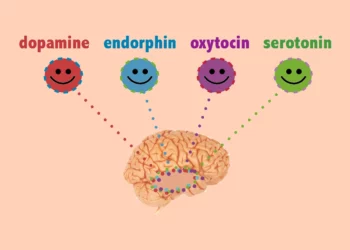Feeling like people are invading your personal space? It’s dopamine that does it, researchers report.

We’ve all been there. You’re having a chat with somebody one minute, and the next they’re simply too close. You didn’t make a conscious decision about this, didn’t settle on a ‘too near’ line, but you just know it’s being overrun at that exact moment. So you back away, almost by instinct.
You’d think we have a pretty good idea of what’s working in the background of a concept as universal as ‘personal space’ — but not really. That’s why a team led by Anne F. Simon of Western University’s Department of Biology started studying the need for social space and how it can be disrupted. They report that dopamine, a neurotransmitter best known for its role in the reward pathway of the brain, is a key substance in mediating social space.
A-buzz with dopamine
The team worked with Drosophila melanogaster, the common fruit fly, as they come with certain very desirable traits: they develop really fast, lay a lot of eggs, and are dirt-cheap to feed and care for. They’ve seen a lot of use in scientific pursuits, and they’re the insects Gregor Mendel used to lay the foundation of genetics.
Using genetic and pharmacological manipulations, the team tailored the neurons in some of the flies to produce more or less dopamine than those in unaltered fleas.
Their results show that dopamine is a key component in “the response to others in a social group, specifically, social spacing,” and could change how much space the flies need from each other. The effect was “prominent only in the day-time, and its effect varies depending on tissue, sex and type of manipulation.” For example, too little dopamine made male flies seek greater distances from each other, while too much dopamine made them close ranks. In female flies, both too much or too little release of dopamine made them increase social distance.
“Each animal has a preferred social bubble, a preferred personal space,” said Anne Simon.
“If we can connect the dots with other animals including humans — because we all have similar neurotransmitters — we may gain new ways of understanding what’s happening in some disorders where personal space can sometimes be an issue.”
That discovery may, in turn, have implications for better understanding conditions related to dopamine imbalances, such as schizophrenia or the autism spectrum, for example.
Next, the team plans to expand on the findings from the other way around, and find our how social cues influence dopamine release, and to identify the circuitry that regulates it.
“Ultimately, this research could lead us to understand a little better why some people are averse to social contact. It might also help us understand why some people who clearly want to interact don’t interpret some social cues the same way others might,” said Simon.
The paper “Modulation of social space by dopamine in Drosophila melanogaster, but no effect on the avoidance of the Drosophila stress odorant” has bee published in the journal Biology Letters.






